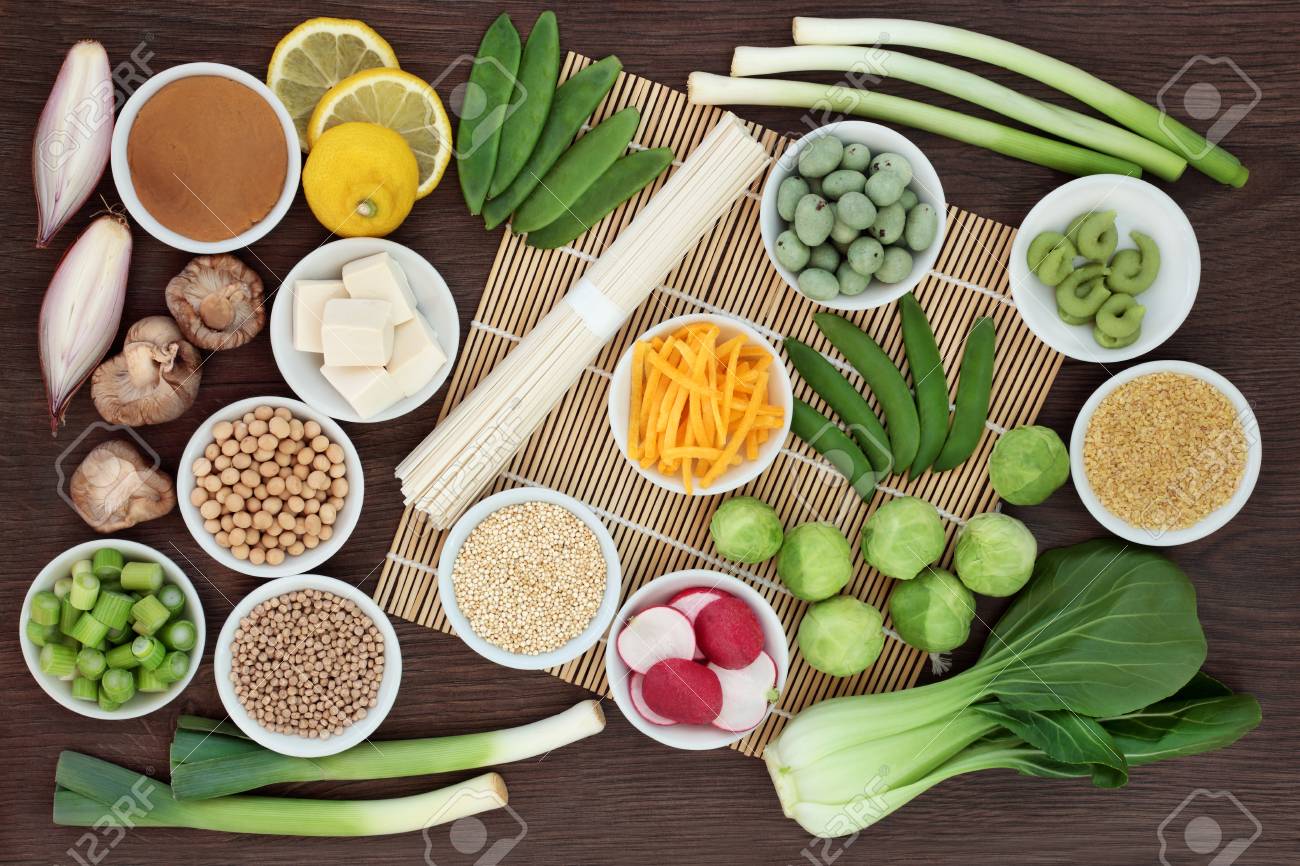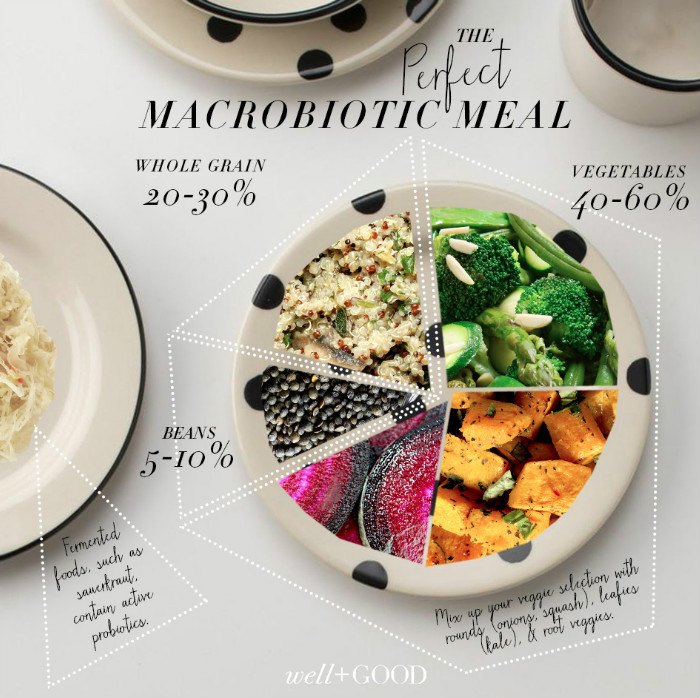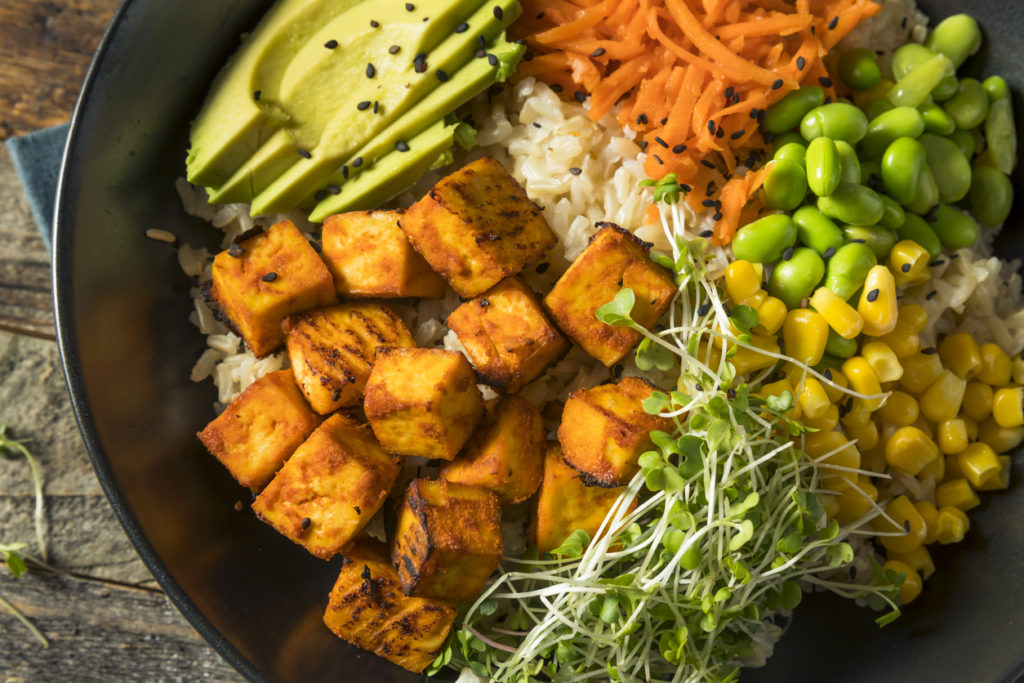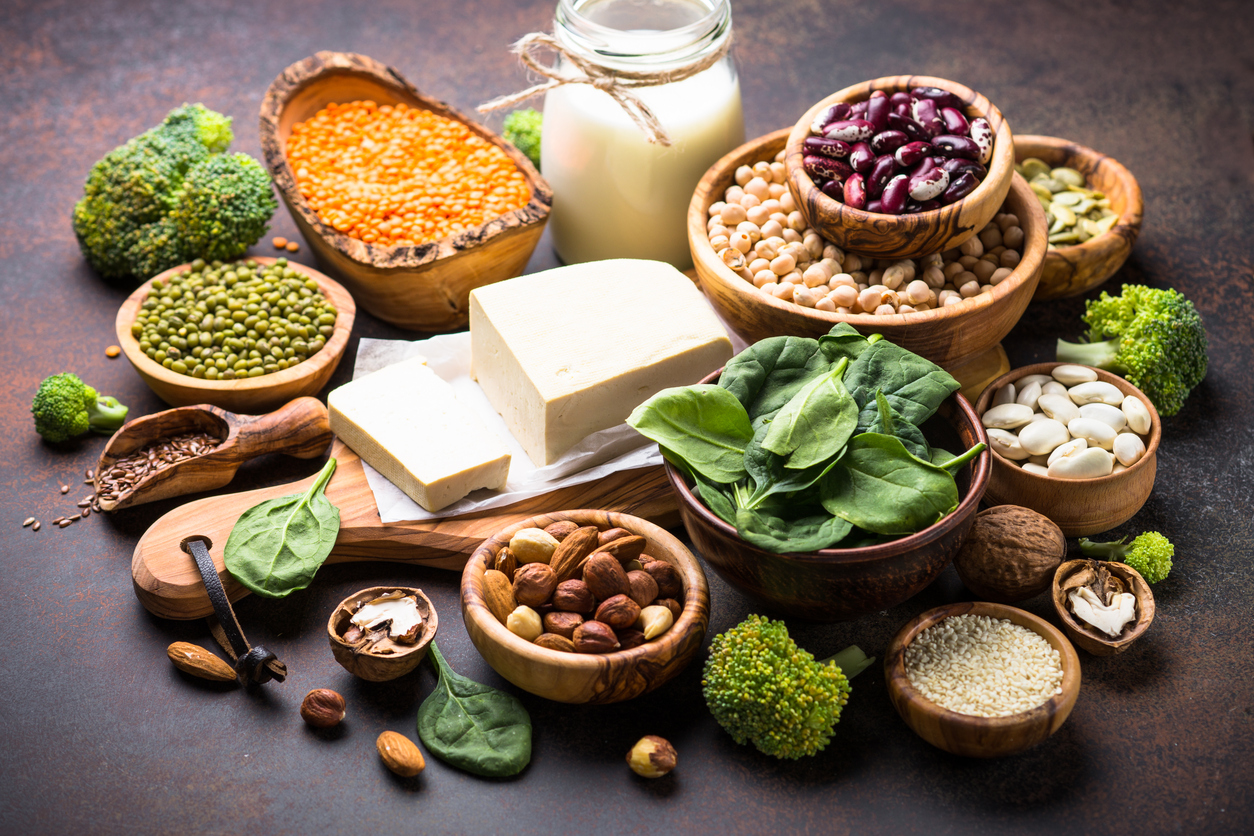Macrobiotic Japanese Diet
Macrobiotics is a diet concept promoted to the world by Japanese George Ohsawa as a way of eating a variety of whole foods that are energetically balanced between yin and yang. The diet became popularized during the 1970s by Michio Kushi who was a student of Ohsawa and founder of Erewhon Natural Foods and the former Kushi Institute.
 Macrobiotic Diet Food With Japanese Udon Noodles Tofu Miso Stock Photo Picture And Royalty Free Image Image 95976383
Macrobiotic Diet Food With Japanese Udon Noodles Tofu Miso Stock Photo Picture And Royalty Free Image Image 95976383
25 fruits nuts and seeds.

Macrobiotic japanese diet. The word macrobiotic has Greek origins and translates as long life. I grew up in Japan where traditionally people ate 90 percent vegetarian with. In terms of the actual food breakdown macrobiotics proposes the following split as a guide.
From his observations of long standing world cultures he then created the ten macrobiotic diet principles. A macrobiotic diet is essentially a balanced whole foods dietand with an added Japanese flair it sounds absolutely divine and health-promoting. In the macrobiotic guideline soup covers for 5 percent of the total meal.
Since macrobiotic diet originated in Japan it is no surprise that soup became part of the diet. Macrobiotics focuses on choosing organic locally grown and seasonal produce. George Ohsawa father of macrobiotics spent time not only in Japan but France and other regions in Europe.
Like the Japanese diet with its small consumption of animal products the macrobiotic diet was typically low in fat and very low in cholesterol and saturated fats. The Macrobiotic diet seeks to maintain optimum balance in the body by combining the foods we eat so that there is an equal amount of yin and yang in every meal. The macrobiotic diet was first developed by a Japanese philosopher called George Ohsawa.
It also recognizes that the body needs different types of foods at different times of the year. If a given health condition requires eating animal-based food usually fish can be added for weight gain or vitamin B12 for red blood cells etc. Ohsawa ranked all foods on a.
However it is not. The diet eliminates most animal products but fish is occasionally permitted. Occasionally fruit nuts and seeds are allowed.
25 vegetables well-cooked lightly-cooked and raw salad 25 bean and soy products. This diet was developed in the 1920s by a Japanese philosopher called George Ohsawa based on principles from Zen Buddhism. Other whole foods she enjoys include blueberries potatoes sweet potatoes acorn squash broccoli carrots strawberries bananas dragon.
He believed in a holistic approach to health incorporating many lifestyle aspects from diet and exercise to meditation and even the yin and yang energy of particular foods. Macrobiotic diet is holistic and very similar to a vegan plant-based diet except one eats seasonal locally grown unprocessed whole grains vegetables and legumes without refined sugar. From this definition macrobiotics is a restrictive Asian diet.
According to Eastern beliefs in nature everything is made up of energy described as having yin or yang characteristics in varying proportions. Macrobiotic eating hit its peak of popularity in the 1980s and remains the backbone of many other diets that have come along since then. Macrobiotics is a diet concept promoted to the world by Japanese George Ohsawa as a way of eating a variety of whole foods that are energetically balanced between yin and yang.
According to Eastern beliefs in nature everything is made up of energy described as having yin or yang characteristics in varying proportions. The macrobiotic diet is based loosely on the traditional Japanese diet and it also supports a healthy lifestyle. As a matter of fact macrobiotics is a multicultural diet and lifestyle.
Japanese philosopher George Ohsawa developed this increasingly popular diet. Macrobiotic roughly translates to longlife in Greek. The macrobiotic diet contains macrobiotic foods like whole grains beans and bean products like tofu organic vegetables local and in season soups sea vegetables desserts sweetened with rice syrup barley malt fruit and sometimes maple syrup a little fish a little fruit pickles condiments nuts seeds and non-aromatic teas.
This is why there is a high emphasis on eating seasonally and locally. Macrobiotics is all about eating in balance. The macrobiotic diet was developed by a Japanese philosopher in the early 1900s.
With a focus on a holistic balanced lifestyle the macrobiotic diet doesnt only focus on what you put in your mouth it has elements of gentle exercise and meditation too. 25 whole grains such as brown rice oatmeal polenta barley pasta or buckwheat. Diet exercise meditation and yin and yang energy of particular foods.
In Japan it is very common to eat with soup specifically miso soup on the side. The macrobiotic diet has its roots in traditional Japanese food which gained popularity in the west in the late 20th century starting around the 1960s. He believed in a holistic approach to health that incorporates many aspects of ones lifestyle.
George Ohsawa a Japanese educator originally developed the macrobiotic diet in the 1920s. Brown rice vegetable soup vegetables beans and sea vegetables are the staples of the diet. It claims to balance ying and yang by using specific types of cooking utensils mainly wood.
 What Is The Macrobiotic Diet Bbc Good Food
What Is The Macrobiotic Diet Bbc Good Food
 She Cooks Macro Vegan Japanese Food Healthy Cooking Raw Food Recipes
She Cooks Macro Vegan Japanese Food Healthy Cooking Raw Food Recipes
 Best Macrobiotic Diet More Macrobiotics Food Illustrations Recipes Asian Recipes
Best Macrobiotic Diet More Macrobiotics Food Illustrations Recipes Asian Recipes
Macrobiotic Sushi Bowl Strength And Sunshine
 Macrobiotic Diet Tips Well Good
Macrobiotic Diet Tips Well Good
 Weekly Series Macrobiotic Diet Steep By Steep
Weekly Series Macrobiotic Diet Steep By Steep
 Recipes Vegan Macrobiotic Japanese Tagged Diet Japanese Clearspring Ltd
Recipes Vegan Macrobiotic Japanese Tagged Diet Japanese Clearspring Ltd
 Macrobiotics The Japanese Concept That Brings Balance To Your Diet Japan Today
Macrobiotics The Japanese Concept That Brings Balance To Your Diet Japan Today
 Macrobiotics The Japanese Concept That Brings Balance In Your Diet Savvy Tokyo
Macrobiotics The Japanese Concept That Brings Balance In Your Diet Savvy Tokyo
 What Is A Macrobiotic Diet Youtube
What Is A Macrobiotic Diet Youtube
 The Macrobiotic Diet Pros And Cons
The Macrobiotic Diet Pros And Cons
 The Macrobiotic Diet Diets Weight Loss Andrew Weil M D
The Macrobiotic Diet Diets Weight Loss Andrew Weil M D
 What Is A Macrobiotic Diet The Macrobiotic Plate Youtube
What Is A Macrobiotic Diet The Macrobiotic Plate Youtube
/GettyImages-688893497-5aa499edc5542e003685f02c.jpg)
Comments
Post a Comment